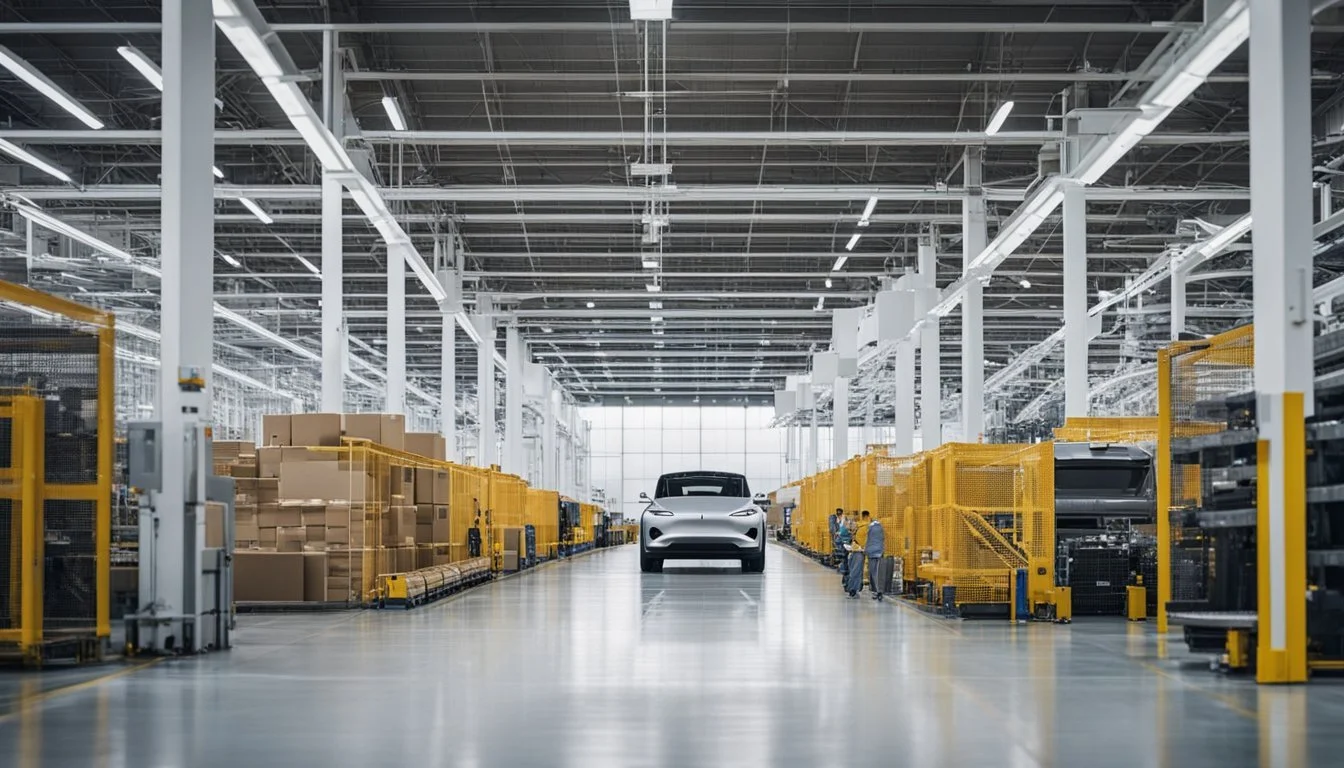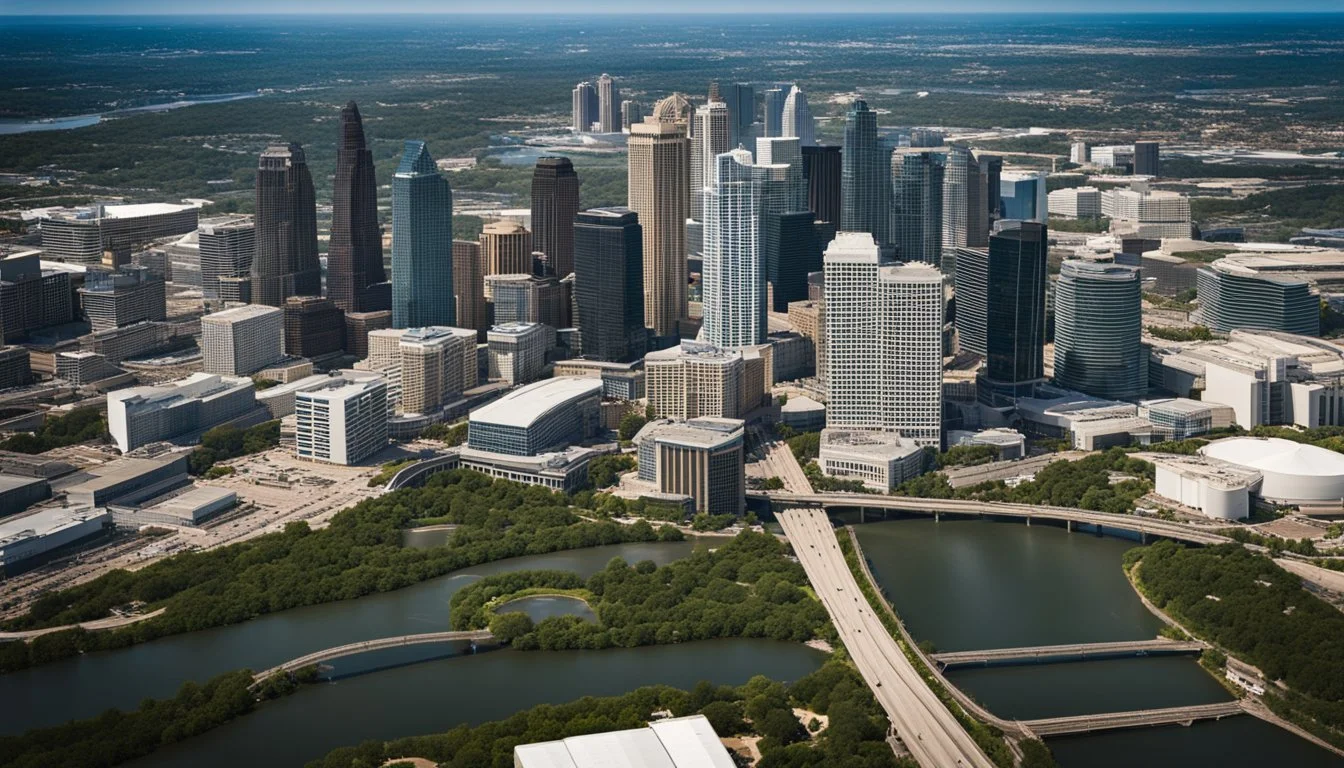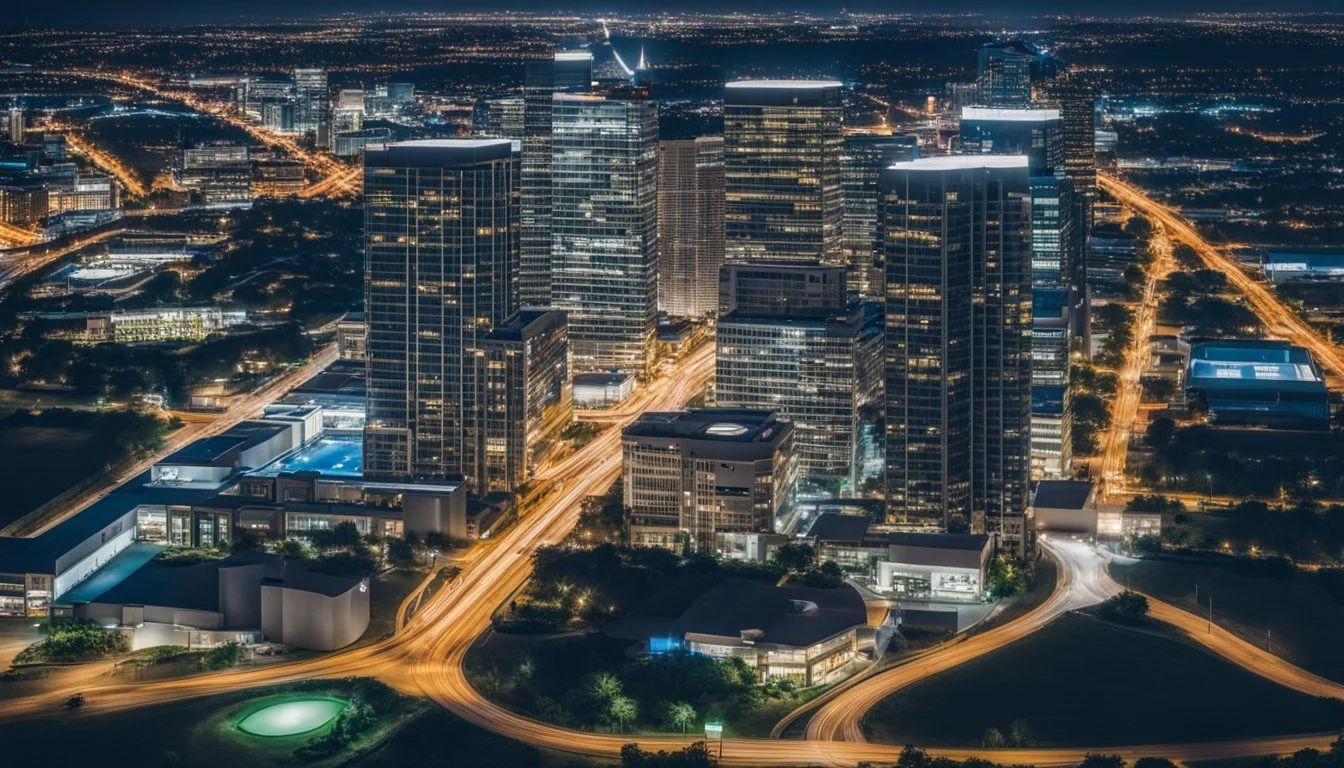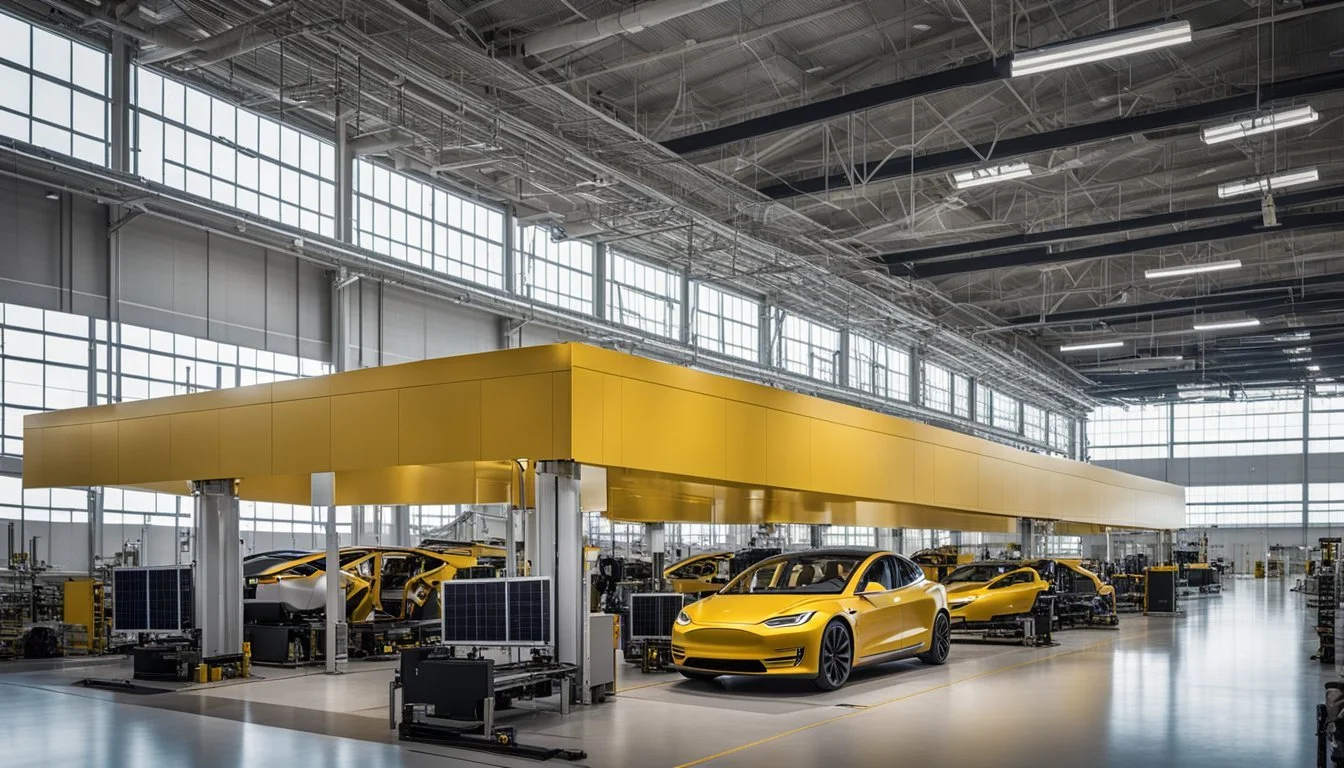Austin's Role in Tesla's Global Supply Chain
A Strategic Nexus
Nestled in the heart of Texas, Austin plays a pivotal role in Tesla's global supply chain. As Tesla continues to push boundaries with innovations like the Cybertruck, the city's strategic importance grows. Austin's robust infrastructure and business-friendly environment provide a strong backbone for the company’s supply and production frameworks.
Tesla's Supply Chain team in Austin focuses on sourcing materials and optimizing supplier relationships, ensuring the seamless production of their electric vehicles. The local talent pool, combining expertise in business, supply chain management, and engineering, contributes significantly to Tesla's mission of accelerating the electric vehicle revolution.
With a commitment to efficiency and sustainability, Tesla leverages Austin's capabilities to overcome global supply chain challenges. The city’s role is not just limited to operations; its thriving community and dynamic workforce are central to Tesla’s ambitious plans for the future.
Tesla's Expansion to Austin
Tesla, led by CEO Elon Musk, shifted its headquarters from Palo Alto to Austin in 2021, establishing the Gigafactory Texas to bolster its production capabilities and innovation. This move brought significant benefits, making Austin a central hub in Tesla's global supply chain.
From Palo Alto to Giga Texas
In October 2021, Elon Musk announced the relocation of Tesla's headquarters from Palo Alto, California, to Austin, Texas. This strategic move was completed swiftly, aligning with Tesla's vision for greater efficiency and expansion.
Austin offered numerous advantages, including a business-friendly environment and ample space for the Gigafactory Texas. With an initial workforce that has grown rapidly, Tesla's presence in Central Texas has been transformative. The facility is crucial for scaling up production of electric vehicles and battery technology.
The Significance of Austin for Tesla
Austin has become a vital node in Tesla's operations. Gigafactory Texas serves not only as a production site but as an innovation center. The factory's location facilitates better logistical connections across the U.S., enhancing the supply chain's resilience.
Tesla's workforce in Austin has surged to 22,777 employees, surpassing local giants like H-E-B. This expansion underscores Austin's importance in Tesla's strategy, contributing significantly to the company's manufacturing and technological advancements.
Economic Impact on the Region
Tesla's expansion in Austin has significantly impacted the region's economy through substantial job creation and partnerships with educational institutions.
Job Creation and Employment
Tesla has emerged as Austin's largest private employer. Its workforce at the Giga Texas facility has grown by 86%, reaching 22,777 employees. This growth has outpaced traditional large employers in the area, such as the grocery chain H-E-B.
The company's presence has provided high-paying jobs and boosted local purchasing power. In April 2024, despite reports of global workforce reductions, Tesla continued to influence the local economy through sustained job opportunities. As Tesla's operations expand, its direct employment figures are complemented by jobs created indirectly in supply chains and allied services.
Collaborations with Local Institutions
Tesla has engaged in several collaborations with local institutions to ensure a well-trained workforce. Partnerships with Austin Community College and the University of Texas focus on developing programs tailored to the skills required by the company. These initiatives aim to prepare students for careers in advanced manufacturing and electric vehicle technologies.
Additionally, Tesla supports initiatives that promote STEM education in local schools. The company’s involvement with educational institutions has not only widened career pathways for local students but also ensured a steady influx of skilled labor necessary for sustaining its operational growth in the region. This symbiotic relationship strengthens both the educational landscape and the local economy.
Manufacturing Capabilities
Tesla's new factory in Austin, Texas is a cornerstone of its ambitious growth strategy. This facility plays a key role in producing the Model Y and Cybertruck, manufacturing advanced batteries, and integrating cutting-edge automation and robotics into its processes.
Model Y and Cybertruck Production
The Austin factory is pivotal for Tesla’s production of the Model Y and the upcoming Cybertruck.
Spanning up to 5 million square feet, it is designed to handle large-scale manufacturing demands and employs approximately 5,000 people. The site’s advanced assembly lines and state-of-the-art equipment ensure high efficiency and scalability. This robust setup is critical for meeting Tesla's goal of producing 20 million vehicles per year by 2030.
Battery and Power Electronics Manufacturing
A significant feature of the Austin factory is its battery manufacturing capabilities.
The facility is geared towards producing the 4680 battery cells, which are central to Tesla’s future vehicle performance and cost efficiency. These batteries promise increased range, faster charging, and lower production costs. Additionally, the production of power electronics in-house helps Tesla maintain control over quality and innovation, contributing to its overall operational agility.
Innovation in Automation and Robotics
Tesla's Austin factory leverages sophisticated automation and robotics to streamline production.
The integration of robotics in the assembly process reduces labor costs and enhances precision, ensuring uniform quality across all manufactured units. Advanced automation techniques are applied at various stages, from component manufacturing to final assembly. This technological edge not only boosts productivity but also minimizes errors, making the entire manufacturing process more efficient and reliable.
Supply Chain Dynamics
Tesla's Austin facility plays a crucial role in the company's ability to navigate complex supply chain challenges. Key efforts focus on integrating local and global suppliers and investing in sustainable materials to enhance efficiency and environmental responsibility.
Local and Global Supply Integration
Tesla's strategic location in Austin allows it to capitalize on both local and international suppliers. Local suppliers provide essential components such as electronic parts and basic raw materials. This proximity reduces lead times and transportation costs, increasing overall efficiency.
Internationally, partnerships with global suppliers help Tesla secure advanced components and materials necessary for their electric vehicles. By balancing local and international supply chains, Tesla mitigates risks associated with geopolitical uncertainties and global disruptions. This dual-source strategy ensures a consistent flow of materials, supporting seamless production at its Austin facility.
Investment in Sustainable Materials
Tesla prioritizes sustainable materials to minimize the environmental impact of its supply chain. The Austin facility incorporates materials from eco-friendly sources, promoting sustainability. Efforts include partnerships with lithium mining sites and refineries to secure ethically sourced lithium for battery cells.
Investments in battery cell production at Austin aim to create a closed-loop system where materials are recycled and reused, reducing waste. Tesla's focus on sustainability extends to all aspects of the supply chain, making it a key factor in their operational strategy. This commitment ensures that the company remains a leader in environmental responsibility while maintaining a robust and efficient supply chain.
Infrastructure and Accessibility
Tesla's operations in Austin benefit significantly from the city's strategic location and robust transportation network, as well as its vibrant local industry interactions.
Strategic Location and Transportation
Austin is centrally located in Texas, which offers a geographical advantage for logistics and distribution. This strategic positioning allows Tesla to efficiently manage supply routes across North America.
The city is well-served by major highways such as Interstate 35, connecting Austin to key markets including Dallas, San Antonio, and beyond. Additionally, Austin-Bergstrom International Airport facilitates the swift movement of parts and components, enhancing Tesla's agility in addressing global supply chain demands.
Moreover, the Port of Houston is just a few hours away, providing vital access to international maritime shipping routes. This extensive transportation infrastructure ensures that Tesla can easily receive and distribute materials, further optimizing its supply chain operations.
Interaction with Local Industry
Austin is home to a thriving tech sector and a skilled workforce, which are crucial for Tesla's advanced manufacturing needs. Local suppliers and tech firms offer cutting-edge solutions and innovations that bolster Tesla's production capabilities.
Collaboration with Austin-based businesses enables Tesla to source high-quality components locally, reducing dependency on distant suppliers. This proximity allows for faster development cycles and seamless integration of new technologies into Tesla's manufacturing processes.
The city's robust educational institutions, including the University of Texas at Austin, contribute to a steady stream of engineering talent. This local expertise supports Tesla's mission of continuous innovation and helps maintain its competitive edge in the automotive industry.
Environmental Initiatives
Austin plays a crucial role in Tesla's efforts to enhance sustainability and reduce environmental impact. This involves a strong commitment to clean energy and the implementation of eco-friendly manufacturing processes.
Clean Energy Commitment
Tesla emphasizes the use of clean energy in Austin, particularly in powering its facilities dedicated to the production of electric vehicles. The Gigafactory Texas, a cornerstone of this initiative, operates significantly on renewable energy sources such as solar and wind power.
By integrating these renewable energy sources, Tesla mitigates its carbon footprint compared to traditional manufacturing plants. While Ford and other competitors are also exploring renewable energy, Tesla's strategy appears more embedded into its operational framework, reflecting a robust commitment to sustainability in its Austin operations.
Eco-Friendly Manufacturing Processes
Tesla's operations in Austin include innovative, eco-friendly manufacturing processes to lessen environmental impacts. The implementation of closed-loop recycling systems for batteries and materials helps minimize waste and resource consumption.
Tesla has invested significantly in water conservation techniques, reducing water usage in vehicle production. Moreover, the use of advanced robotics and automation enables more precise manufacturing, reducing material wastage and energy consumption.
These processes set Tesla apart from traditional automakers, promoting a greener manufacturing ethos that is increasingly crucial in the competitive landscape of electric vehicles.
Community and Economic Development
Tesla's presence in Austin has fundamentally altered the economic landscape, highlighting significant collaboration with local businesses and educational institutions. These partnerships and programs foster community growth, skill development, and economic prosperity.
Partnerships with Local Businesses
Tesla has actively partnered with local businesses to boost the community's economic vitality. Key collaborations include H-E-B and several other regional suppliers, ensuring a sustainable supply chain.
This initiative has encouraged the growth of local economies in places like Kyle and Travis County. By tapping into local resources, Tesla ensures that investments stay within the community, promoting broader economic benefits.
The substantial investment of over $10 billion in local infrastructure and facilities has generated numerous job opportunities, further contributing to the economic development of the region. This symbiotic relationship not only supports Tesla’s operational needs but also enhances the stability and growth of local enterprises.
Educational Outreach and Training Programs
Tesla’s operations in Austin have also prioritized educational outreach and workforce training programs. Collaborations with local educational institutions aim to develop a skilled workforce equipped to handle advanced manufacturing processes.
Partnerships with community colleges and technical schools provide training that aligns with Tesla’s technological and operational requirements. This hands-on training prepares students for real-world applications, directly translating into increased employability.
Further, Tesla's investment in education through internships and apprenticeship programs fosters a learning culture, bridging the gap between academia and industry needs. Such initiatives empower residents with the skills and knowledge necessary to thrive in a tech-centric employment landscape, promoting economic self-sufficiency and growth.
Market Influence and Competitiveness
As Tesla continues its expansion, understanding its market influence and competitive advantages in the electric vehicle (EV) sector is crucial. This section will explore Tesla's standing in the market and its unique strengths.
Tesla's Market Position
Tesla remains a formidable player in the automotive industry, especially in the EV market. By 2023, Tesla was the most valuable automotive company globally, showcasing its influential market presence. Their innovative approach to EV technology and manufacturing sets them apart from traditional automakers.
The leadership of Elon Musk has been pivotal, driving forward ambitious goals like selling 20 million vehicles annually. According to Bloomberg, Tesla's strategic maneuvers and groundbreaking products have cemented its place as a leader in the EV market.
Competitive Advantages in the EV Space
Tesla's competitive edge lies in several areas. One significant advantage is its ability to design components in-house, which enhances agility and innovation. This in-house design capability allows Tesla to quickly adapt to supply chain disruptions, unlike many traditional automakers.
Tesla's vertically integrated supply chain, similar to Apple's model, ensures better quality control and cost management. Automakers such as BYD might offer competition, but Tesla's unique approach and continuous technological advancements make it hard for competitors to match its pace.
Tesla has also invested heavily in automation and digital technologies, although these efforts have sometimes been challenging. Articles on Electrek highlight that these innovations provide Tesla with the ability to scale operations efficiently, further solidifying its dominance in the EV sector.
Future Outlook
Tesla's presence in Austin plays a strategic role in its global ambitions. This section explores Tesla's future expansion plans and the challenges and opportunities the company may encounter.
Expansion Plans and Growth Trajectory
Tesla's Giga Texas, located in Austin, is poised to become a cornerstone of its production strategy. The facility has seen a workforce increase by 86%, reaching 22,777 employees. Tesla aims to expand further, possibly tapping into nearby locations such as Corpus Christi to bolster supply chain logistics.
The company's projection includes escalating high-volume production for models like the Model S and X. Austin's Gigafactory is expected to innovate and streamline processes to keep up with the rapid global demand for electric vehicles.
Potential Challenges and Opportunities
While Tesla's expansion in Austin is promising, balancing headcount and technological innovations poses unique challenges. The global supply chain issues, particularly with semiconductors, remain a critical factor that could affect production timelines. Musk himself has highlighted the complexity of these issues.
Conversely, there are significant opportunities for Tesla to leverage Austin's tech-friendly environment for innovation. The city's growing workforce and Tesla's strong presence create potential for collaborations that could cement Austin as a vital hub in the electric vehicle revolution. Exploring solutions for logistical hurdles could also enhance efficiency and strengthen Tesla's market position.






